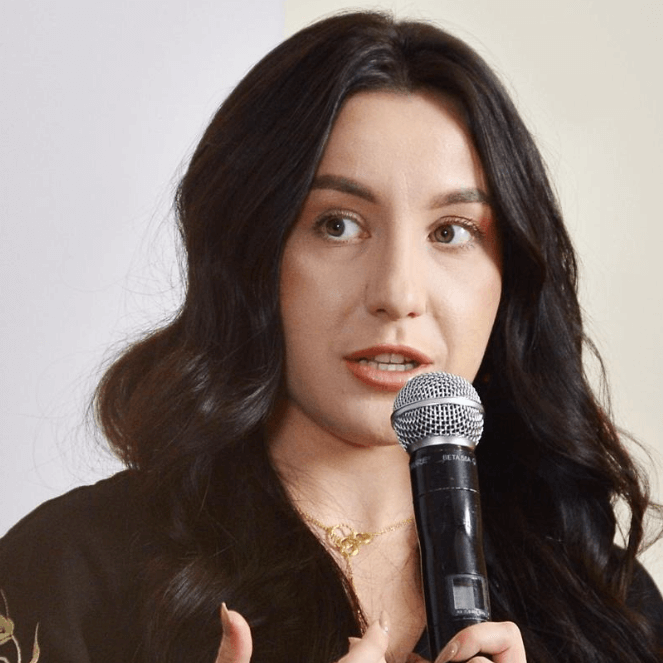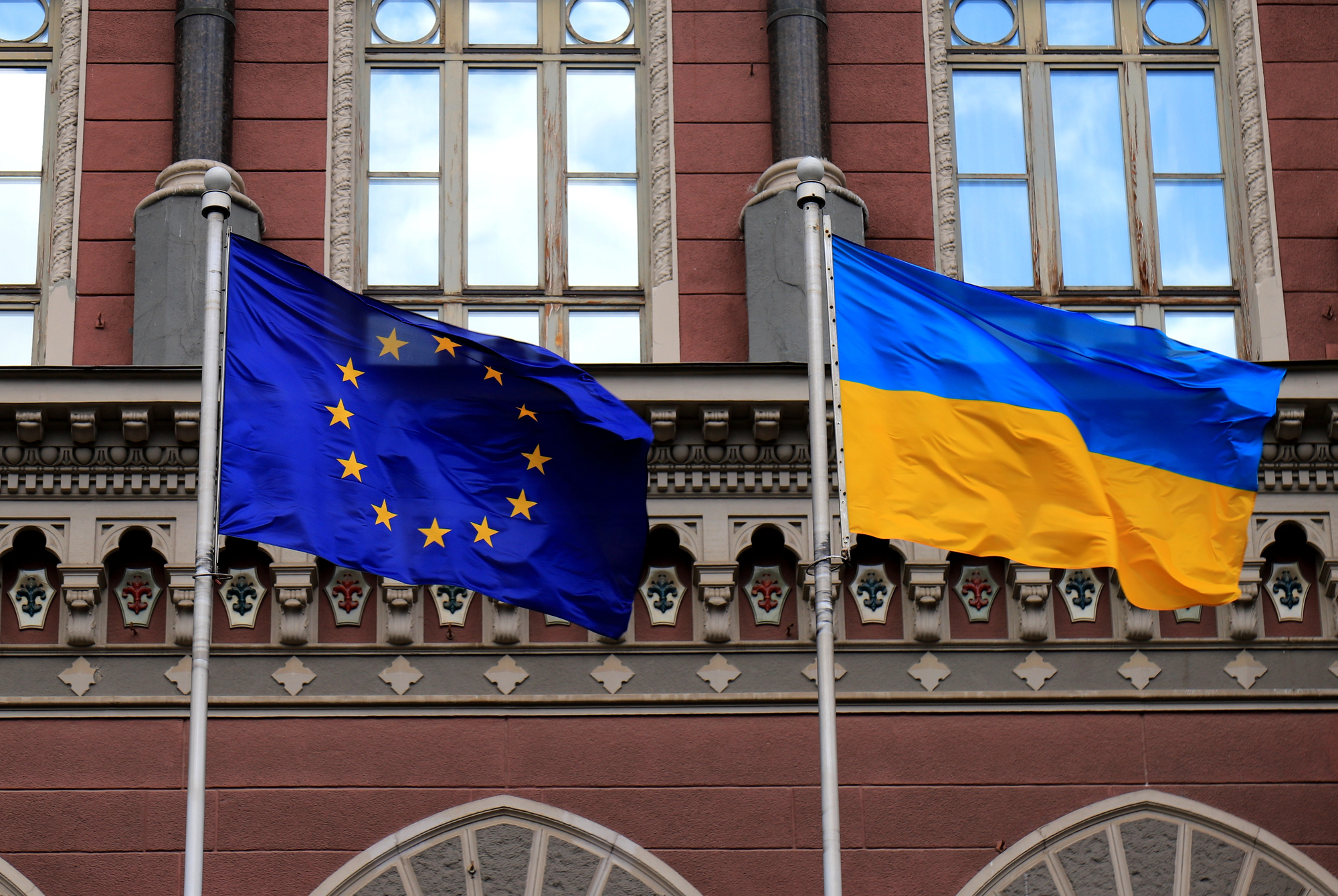There is an epidemic in Ukraine but no vaccines! Vaccination can cause death or incurable disease! Vaccines are of poor quality and vaccination is expensive! Such information resurfaces across Ukrainian media every year causing panic among people. Despite the MOH information campaigns and doctors’ clarifications Ukrainians are still more responsive to provocative headlines rather than expert explanations.
In recent weeks, one of the trending topics in the Ukrainian media has been the outbreak of diphtheria. So today VoxCheck and Ukrainian Radio have decided to remind their audience about vaccination: what diseases are targeted and recommended age at which the vaccines should be received, whether it can be done free of charge, where to find vaccines, etc.
We will also refute the main myths and manipulations regarding vaccination that appear every year in the information space providing information on the reliable sources regarding infectious disease protection.
Disclaimer: This article was produced with the support of the American people through the USAID Media Program in Ukraine, implemented by the international organization Internews. Content is the sole responsibility of VoxUkraine and does not necessarily reflect the views of USAID, the US Government, or Internews.

Why do terrible infectious diseases occur in Ukraine: measles last year and diphtheria this year?
There are several reasons for this. People simply do not want to get vaccinated, they are afraid of the diseases that the vaccines might cause, or they fear that the vaccines may be of poor quality.
1) The immunization coverage
Ukrainian children have low immunization coverage. According to the World Bank data for 2016: 19% of children were inoculated with the diphtheria, pertussis and tetanus vaccine (DPT), 26% with the hepatitis B vaccine and 42% with the measles, mumps and rubella (MMR) vaccine.
Independent Ukraine has occasionally faced vaccine shortages. For instance, vaccination campaign failures occurred in the early 2000s due to interruption in vaccine deliveries to some regions as well as insufficient procurement funds. According to the Accounting Chamber (AC), in 2009-2014 the vaccine demand was never met in full. There were also occasional cases of the vaccines being shipped in but ending up spoiled due to bad storage conditions.
The situation somewhat improved in 2017-18 with 50% of children being immunized with the diphtheria, pertussis and tetanus vaccine and 52% and 86-91% with the hepatitis B and the measles, mumps and rubella vaccines, respectively.
2) People deny vaccination as they are afraid of dying or getting sick because of the vaccines
According to a study by Chephra McKee and Kristin Boannon, today the main causes of the movement of vaccine opponents are:
- Parents’ religious beliefs;
- Personal beliefs (e.g. natural immunity is better than immunity acquired through vaccination);
- Concerns about the safety of vaccines based on information discovered in the media or received from acquaintances;
- Insufficient information regarding vaccination (parents want to know more about the benefits and risks associated with vaccines but do not receive this information).
The belief that vaccines may cause disease or incurable conditions is widespread not only in Ukraine but also abroad. Vaccine deniers believe that immunization causes unpredictable consequences ranging from autism to death.
The first smallpox vaccine was introduced by English scientist Edward Jenner in 1798 but vaccinations immediately had many opponents due to religious reasons. Religious fears eventually subsided giving way to other fears, namely that vaccines contain weakened, killed pathogens or waste products which does not sound very pleasant. Pertussis vaccines, for one, contain whole dead microorganisms of the disease. The flu and measles vaccines are attenuated viruses. No matter how often the doctors explain that these components of vaccines are not capable of killing or maiming many people still do not believe it.
All this was aggravated by the news about child deaths following the vaccinations. In 2015, Ukraine was shocked by a little boy’s death in Bila Tserkva (Kyiv Oblast) supposedly as a result of vaccination. Similar news also appeared in 2018.
Occasionally, one comes across fake news like “the US federal government has publicly confirmed that vaccines regularly mutilate and kill children across America” or “Japan has banned measles vaccines“.
In reality, scientific studies never discovered a link between vaccinations and the fatal cases. The World Health Organization has repeatedly denied that people die or suffer from vaccines. “Vaccines are actually very safe, despite implications to the contrary in many anti-vaccine publications. Most vaccine adverse events are minor and temporary, such as a sore arm or mild fever. These can often be controlled by taking paracetamol after vaccination. More serious adverse events occur rarely (on the order of one per thousands to one per millions of doses), and some are so rare that risk cannot be accurately assessed. As for vaccines causing death, again so few deaths can plausibly be attributed to vaccines that it is hard to assess the risk statistically. Each death reported to ministries of health is generally thoroughly examined to assess whether it is really related to administration of vaccine, and if so, what exactly is the cause. When, after careful investigation, an event is felt to be a genuine vaccine-related event, it is most frequently found to be a programmatic error, not related to vaccine manufacture”, the WHO website states.
In Ukraine, the movement against vaccination is also developing for the benefit of some market players. According to former member of the Board of the Center for Combating Corruption, Oleksandra Ustinova, the campaign against “Indian vaccines of poor quality” unfolded in 2008 after the UNICEF delivered 9 million doses of measles and rubella vaccines to Ukraine for free. “Pharmaceutical distributors that supplied another vaccine (the only registered vaccine in Ukraine) would lose their exclusive rights. That is, their monopoly and hundreds of millions of hryvnias. <…> A media campaign was launched against the “cheap Indian vaccine” which caused a child’s death. The chief immunologist was dismissed and the Minister was plotted against,” Ustinova wrote in her column on Ukrainska Pravda.
3) Vaccines are of poor quality and dangerous
There are true stories of the vaccines of poor quality being distributed like the one causing a scandal in China last year. It became known that a major pharmaceutical manufacturer violated the standards when producing at least 250,000 doses of diphtheria, tetanus and pertussis vaccines. Although there were no reports of deaths or complications due to these specific vaccines this did not stop the parents’ outrage and fear.
Vaccines for Ukraine are purchased by the United Nations Children’s Fund (UNICEF) from manufacturers in France, the United States, India, Bulgaria, Belgium and South Korea. Vaccines from India cause the patients’ major concern. From this country, we get vaccines for diphtheria, tetanus and pertussis, and some parents complain that immunizing with this vaccine was complicated. However, all of these vaccines undergo a number of quality tests, and the World Health Organization regularly conducts vaccine re-qualification process, an additional careful quality testing of the vaccines and the conditions of their production.
But sometimes vaccines do not work. There is a small percentage of people who do not develop long-lived immunity to the disease even after immunization. Medical science still does not know exactly the reason for this. It is only known for sure that the proportion of such people is very small. But their exact number is unknown since the only way to detect them is to run a blood test for antibodies to a particular infection 3-6 months after immunization.
Who and when should be immunized?
The Ministry of Health approves an immunization schedule that complies with the WHO guidelines based on medical practices. It has 7 types of vaccinations most of which need to be performed in the first 18 months of life. Children are then vaccinated at the age of 6 against MMR, diphtheria, tetanus and polio. This vaccine is received again at 14 years. At 16, children get revaccinated against diphtheria and tetanus. This is where obligatory immunization ends. Only diphtheria and tetanus vaccinations are repeated every 10 years.
Some people believe that adults cannot be vaccinated for free.
The MOH should provide all children and certain categories of adults with free vaccines in the immunization schedule. Adults must be vaccinated against diphtheria and tetanus every 10 years. Also, unvaccinated adults can be immunized with the measles, mumps, and rubella vaccine provided they are under 30 or belong to the risk group (e.g. doctors and teachers who have a lot of contact with other people).
In February 2019, social networks abounded in comments about adults not being able to get vaccinated. In this case, family physicians advised that an analysis for measles antibodies (IgG) be performed and, in case of no antibodies, that outpatient clinics be contacted again for vaccination. It should be noted that some doctors even advise to forgo the analysis and go straight for the vaccination. Even if the antibodies are already present in the body the new ones will do no harm. On the other hand, immunization “just in case” may not be worth it: it may only result in children not getting enough vaccines.
All immunization costs are covered by the state. Private clinics do not receive vaccines from the state having to purchase them on their own. However, the MOH also intends to supply vaccines to private clinics that have contracts with the NHSU to provide the guaranteed benefit package to patients (children and adults at risk) with whom the institutions’ doctors have signed declarations. As for the vaccines for all other diseases (i.e. except diphtheria, tetanus and measles in most cases) adults should purchase them from pharmacies or private clinics.
How do I know if there are vaccines in my area? And with the epidemic already there, may vaccinations be performed?
The vaccine availability information can be looked up on the MOH website. Immunization is performed both in public primary care facilities and in private clinics. In case of non-availability of vaccines at state clinics you should contact your local health departments. Vaccines may also be unavailable in private hospitals since the state does not provide them.
The myth of immunization during an epidemic primarily relates to measles and the flu. Yet, an epidemic or contacts with patients is no contraindication for inoculation. Quite the contrary, in case of measles the MOH advises that vaccination be performed within three days after a contact with the patient (however, this does not apply to children under 6 months). With no vaccination record, two doses should be administered at intervals of no less than a month to ensure complete protection against the disease. WHO makes similar recommendations.
It is advisable to get the flu shot before the virus starts circulating but it is not too late to do it while it is spreading. However, immunization will really need to be postponed in case of an acute infectious disease since it is an additional burden on the immune system whereas the body should not be “distracted” from fighting other stimuli producing enough antibodies after the shot is given. A serious allergic reaction to the previous dose of the vaccine, very weakened immunity (e.g. caused by AIDS or chemotherapy) and pregnancy are also contraindications. A comprehensive list of contraindications to vaccination can be found here and here.
What were the manipulations regarding the incidence rate and vaccines on the part of politicians?
False
“In 2016, 2017 and 2018, the WHO said that our country had the lowest child vaccination coverage in the world. Why didn’t they say that in 2010, 2011 and 2012? ”
Oleksandr Vilkul, 14/02/2019 (47:11-47: 25)
To estimate the overall vaccination coverage, the UNICEF uses the percentage of children immunized with the diphtheria, tetanus and pertussis (DTP) vaccines. This data for Ukraine and its rating in a particular year can be seen in the table below. According to the table, Ukraine has not been ranked last in the world over the last 5 years. It happened in 2010-2011. Thus, Olexandr Vilkul told a lie.
Manipulation
“Nine thousand people have contracted measles this year and the vast majority of them were not able to receive the measles vaccine.”
Oleh Liashko, 03/04/2018 (36: 01-36: 04)
Indeed, according to the MOH data, 9.8 thousand people came down with measles in 2018. However, this was not due to the non-availability of vaccines which amounted to 335 thousand vials (2 doses each) as of April 1. This high incidence was due to the low immunization coverage and reluctance to perform vaccinations prior to the outbreak of the disease.
Manipulation
“The population immunity has been destroyed, the vaccination coverage has dropped below that of the 90s.”
Olha Bohomolets, 03/04/2018
If Olha Bogomolets cited this information unrelated to the claim that Suprun was guilty of “destroying the population immunity of the nation” the statement would be true. But the politician links the current leadership of the MOH to immunization problems while the problem has been around for many years.
Ukrainian children do have low immunization coverage. According to the World Bank data for 2016: 19% of children were immunized with the diphtheria, pertussis and tetanus vaccine (DPT), 26% with the hepatitis B vaccine and 42% with the measles, mumps and rubella (MMR) vaccine. There are two global reasons for this. Vaccine shortages occasionally occurred in independent Ukraine. For instance, vaccination campaign failures occurred in the early 2000s due to interruption in vaccine deliveries to some regions as well as insufficient procurement funds, in general. According to the Accounting Chamber (AC), the vaccine demand was never met in full in 2009-2014. Occasionally, there were also cases of the vaccines being shipped in but ending up spoiled due to bad storage conditions. (see the AC report for 2008).
Launching an anti-vaccination campaign: people have lost trust in vaccines and this is happening not only in Ukraine. People do not trust in immunization because they suspect poor quality of vaccines and/or inappropriate storage conditions. In recent years mistrust has been fueled by the articles in the media that blamed the death of children on vaccination though not one such fact has been proven in court yet. The situation in Ukraine has been improving starting from 2017. For example, the planned immunization covered 93.3% at the start of 2018 which is almost the norm by the standards of the World Health Organization. The situation with immunization against DTP and hepatitis B is worse with the planned coverage to date being 52% and 57%, respectively (by comparison, these figures were below 50% in 2016). Therefore, the likelihood of Ukrainians contracting hepatitis, diphtheria or other diseases is quite high.
Where should information about vaccines and immunization be looked up?
To start with, take a look at the MOH immunization schedule. Please be reminded that if you are not sure if you were immunized got at a certain age, you should see your family doctor.
On the MOH website under “Immunization”, you will find answers to the following questions: when and under what conditions immunization should be performed, whether vaccines are safe or whether they are as dangerous as we are being told. This MOH table provides information on vaccine availability in your area. The MOH also regularly informs citizens about the sickness rate of the population and the epidemiological situation in the country.
Data on the child immunization coverage is provided by the World Bank – separately for vaccination with the diphtheria, tetanus and pertussis vaccine, immunization against hepatitis B and measles, mumps and rubella – as well as by the United Nations Children’s Fund (UNICEF). Finally, the World Health Organization (WHO) publishes materials about immunization.
Vaccine supplies, their use and storage conditions are reviewed in the Accounting Chamber’s thematic reports, e.g. here and here.
The Public Health Center writes in plain language about immunization, and infectious diseases and vaccinating against them.
Finally, we recommend that you trust the following experts:
- Viktoriia Zadorozhna, director of the Institute of Epidemiology and Infectious Diseases;
- Ulana Suprun, ex-Minister for Health of Ukraine;
- Kateryna Bulavinova, UNICEF medical consultant;
Volodymyr Kurpita, director of the Public Health Center.
Attention
The authors do not work for, consult to, own shares in or receive funding from any company or organization that would benefit from this article, and have no relevant affiliations





